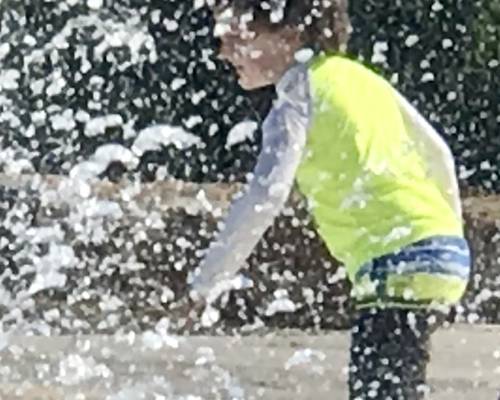TORNADO SAFETY PSA: QUESTIONS AND ANSWERS ABOUT TWISTERS!



It’s tornado season here in the US, and there are a lot of misconceptions about tornadoes and tornado safety. Here are some questions and answers about these deadly twisters.
Is it safe to seek shelter under a bridge or an overpass during a tornado?
NO! Do not do this! Bridges, overpasses, and other structures like them actually funnel and intensify the winds and debris, making it even more dangerous. If the tornado is strong enough, it may even tear apart the structure or cause it to collapse right on top of you.
Am I safe from tornadoes if I live in a big city?
NO! Big cities, including Fort Worth, Dallas, Oklahoma City, Austin, Atlanta, and St. Louis have been struck by tornadoes. There have even been tornadoes in New York City! Tornadoes don’t avoid big cities, but since big cities don’t take up a significant amount of area compared to the area of the United States, basic statistics say there is a less chance of them hitting a large city than an open area since there’s more open area than city!
YES! There was a tornado in Yellowstone National Park, in the mountains! Generally, topography can influence tornado formation as it can block updrafts or otherwise inhibit tornadogenesis, but tornadoes can and do still cross hills, rivers, and even mountains and valleys once they are established.
Should I open the windows in my house before a tornado hits?
NO! It is an old myth that opening windows in your home relieves the pressure changes during a tornado. In reality, it is a waste of precious time. If a tornado hits your house, it would more likely blow out the windows before then anyway. It is best to stay away from windows during a tornado and get to as low a place as possible. Find shelter in an inner room of the lowest floor of your house.
Can you always see a tornado before it strikes?
NO! Tornadoes do not always appear as a visible funnel cloud. They can be and often are hidden by heavy rainfall during the day or by darkness at night. Sometimes, tornadoes are so large that you may not realize what you're seeing until it's too late. Tornadoes can be two miles wide, so if all you see is a wall, it could really be a tornado!
If I can see a tornado and it is not coming directly at me, does that mean I am safe?
NO! Tornadoes move erratically and unpredictably. It is also hard to determine how far away the tornado actually is. Many deaths and injuries from tornadoes are from the debris, as tornadoes toss items they pick up (tree limbs, bricks, cars, personal belongings, etc.). This debris can be hundreds of yards away from the actual funnel, so even if it seems that you aren’t in the direct path of the tornado, you may be in an area where falling debris can cause damage, injury or even death. Always seek shelter in a sturdy building, on the lowest level, away from windows when a tornado is nearby.
Do tornadoes strike the same area twice?
YES! Tornadoes can strike any area at any time, regardless of past history. For instance, Cordell, Kansas was hit by tornadoes on the same day, May 20, three years in a row!
Do mobile home parks attract tornadoes?
NO! Tornadoes are not more likely to hit a mobile home park; however, the chances of them doing more damage and destruction to mobile homes are greater than to other structures since mobile homes are much less sturdy than other homes and buildings. Even the weakest of tornadoes can flip and destroy a mobile home, when a frame home would receive little to no damage in the same storm.
Is the Southwest Corner of a basement the safest place to seek shelter during a tornado?
NO! That is outdated information. As more research has been done, meteorologists now say the safest place to be is in the most interior room on the lowest floor of your house or building. You want to get as many walls and doors between you and the tornado as possible. This greatly reduces your risk of being struck by debris.
Is the damage from tornadoes because of the changes in air pressure?
NO! The damage from tornadoes is due to the strong and violent winds in a tornado. These strong winds are also what cause the flying debris.
If I see downward-bulging clouds, does that mean a tornado is developing?
NO!, at least not necessarily. If those downward-bulging clouds are rotating (a wall cloud), then it is likely a tornado is forming. There are clouds that reach downward that are not indicative of a tornado.
Does the sky always turn green before a tornado?
NO! Do not use the color of the sky as your barometer for whether or not you should take shelter. Scientists are still studying why the sky sometimes turns green before a tornado or large hail hits, and certainly not all tornadoes make the sky turn green before developing. Heed all weather warnings.
Where is your tornado shelter in your home?



















Comments
Share, comment, and thank you so much for your participation!!